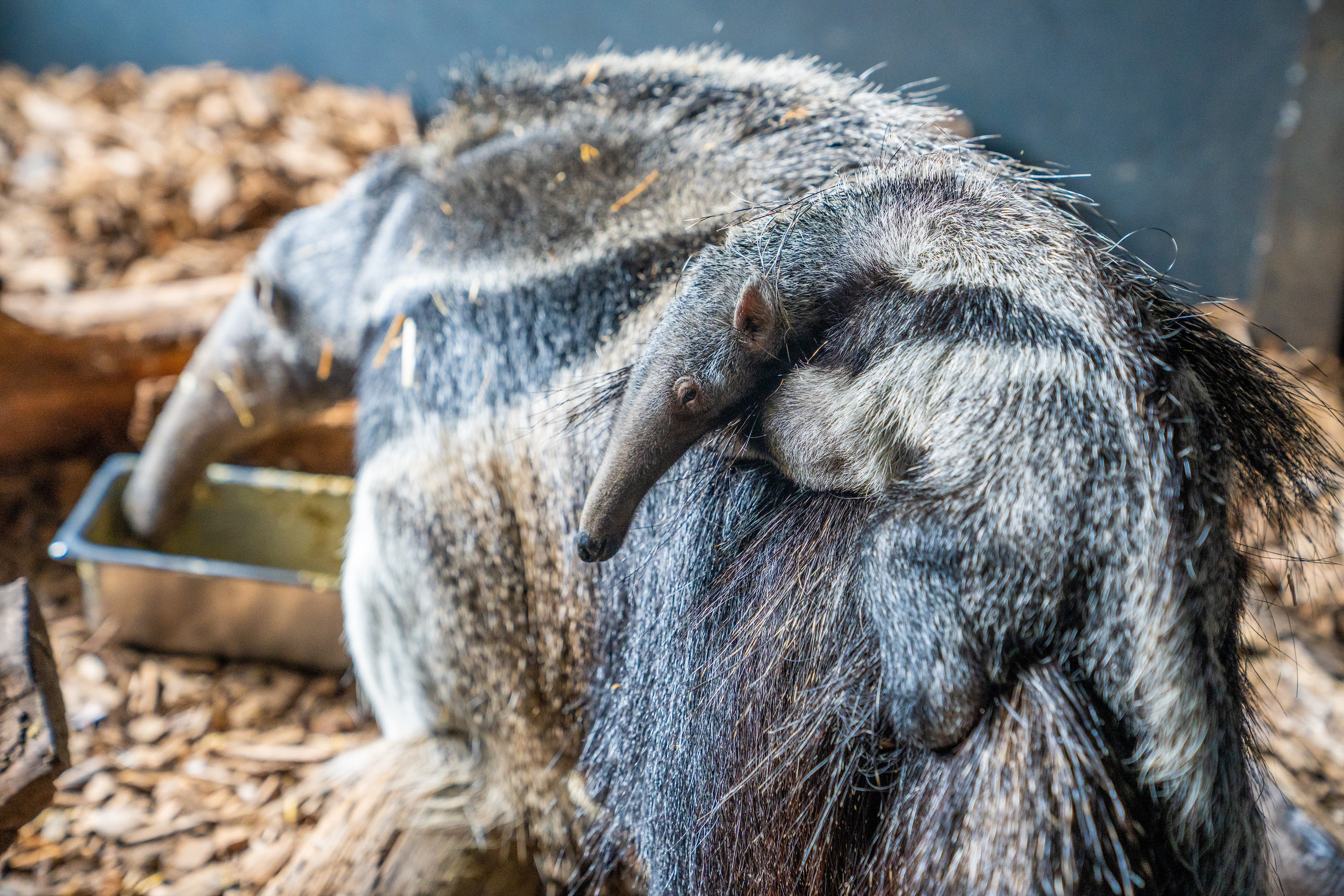Rare anteater birth at Chester Zoo ‘incredibly positive news’ for species
The pup, who is yet to be named, is just the third to be born at the Cheshire wildlife centre since it opened in 1931.

Your support helps us to tell the story
From reproductive rights to climate change to Big Tech, The Independent is on the ground when the story is developing. Whether it's investigating the financials of Elon Musk's pro-Trump PAC or producing our latest documentary, 'The A Word', which shines a light on the American women fighting for reproductive rights, we know how important it is to parse out the facts from the messaging.
At such a critical moment in US history, we need reporters on the ground. Your donation allows us to keep sending journalists to speak to both sides of the story.
The Independent is trusted by Americans across the entire political spectrum. And unlike many other quality news outlets, we choose not to lock Americans out of our reporting and analysis with paywalls. We believe quality journalism should be available to everyone, paid for by those who can afford it.
Your support makes all the difference.A rare giant anteater has been born at Chester Zoo in what keepers have described as “incredibly positive news” for the species.
The pup, who is yet to be named, is just the third to be born at the Cheshire wildlife centre since it opened in 1931.
Footage taken within its den shows the moment the newborn clambered on to its mother’s back – where it will stay camouflaged in her fur for around 10 months until it is ready to walk and find food on its own.
The baby was born to 13-year-old mother Bliss and nine-year-old father Oso as part of an international breeding programme to protect the species.
Giant anteaters are native to Central and South America but categorised as vulnerable by the International Union for Conservation of Nature (IUCN) as their numbers are declining in the wild.
After its birth on March 12, the pup is now around 60cm long, but the species can grow up to 2.1m (7ft) and weigh 50kg.
“Mum Bliss is so far doing an excellent job of looking after her new arrival and seeing the baby clinging on tightly to her back is a really special sight,” said David White, the team manager in charge of caring for giant anteaters at the zoo.
“With giant anteaters being vulnerable to extinction the birth is incredibly positive news for the species.
“It’s a boost to the safety net population being cared for in conservation zoos like ours, while we’re continuing to learn more about them and, at the same time, create more awareness of the majesty of the species.”
Mr White explained that the “fascinating animals” feed mostly on insects and can eat up to 30,000 ants or termites per day, using sticky tongues up to two metres in length to feed – which can extend and withdraw up to 150 times per minute.
“For the time being though, the baby is feeding from mum’s milk – crawling to her underbelly to suckle before climbing back around to rest on her back,” he said.
“The pup will take up this position for around 10 months as its matching fur helps keep it camouflaged, while also making mum look bigger and therefore more off-putting to would-be predators.”
Paul Bamford, Chester Zoo’s field conservation manager for South and Central America, said the biggest threats to wild anteater numbers include habitat loss and traffic collisions.
“It’s not easy to protect a species without an in-depth understanding of what’s happening to them,” he said.
“However, we’re working with our partners in Brazil, the Wild Animal Conservation Institute (ICAS), to carry out vital research to redress this – by assessing the impact of road deaths on giant anteaters over thousands of miles of roads.
“Such high numbers of collisions with motorists have been recorded that it’s now believed to be one of the main threats to the species after habitat loss.”